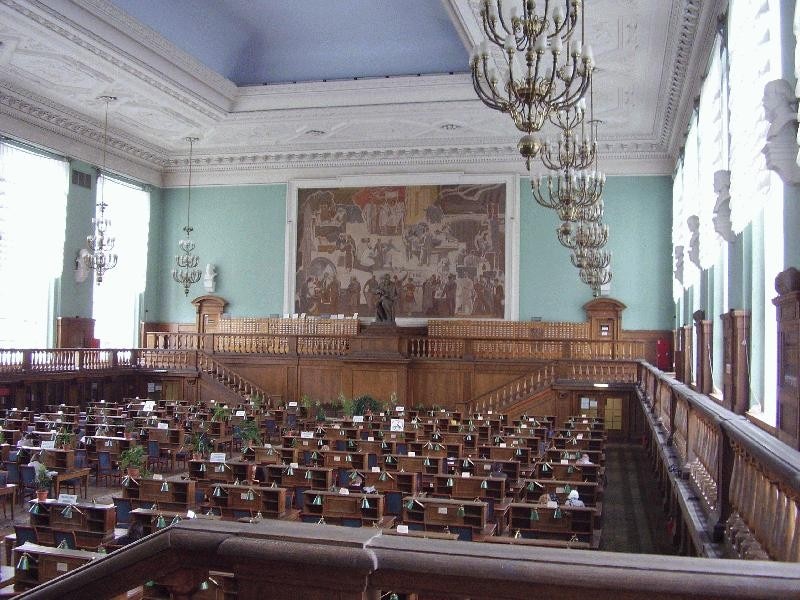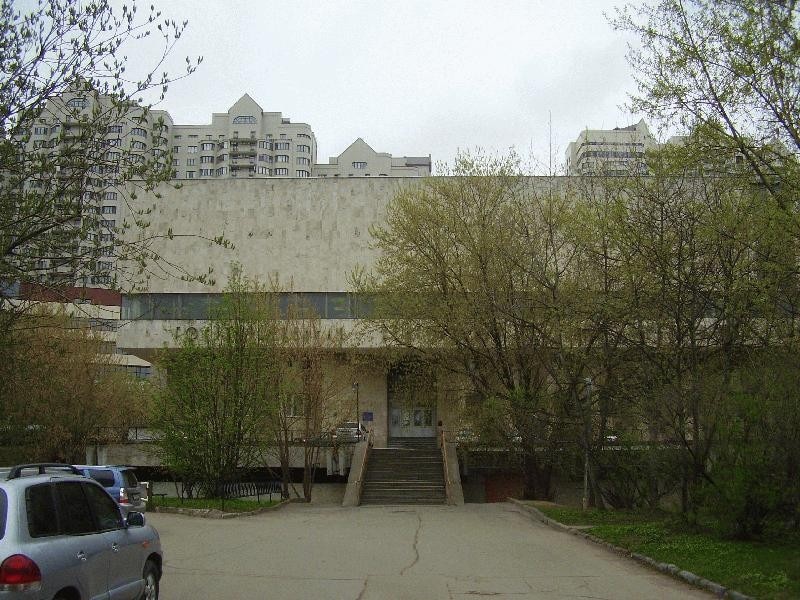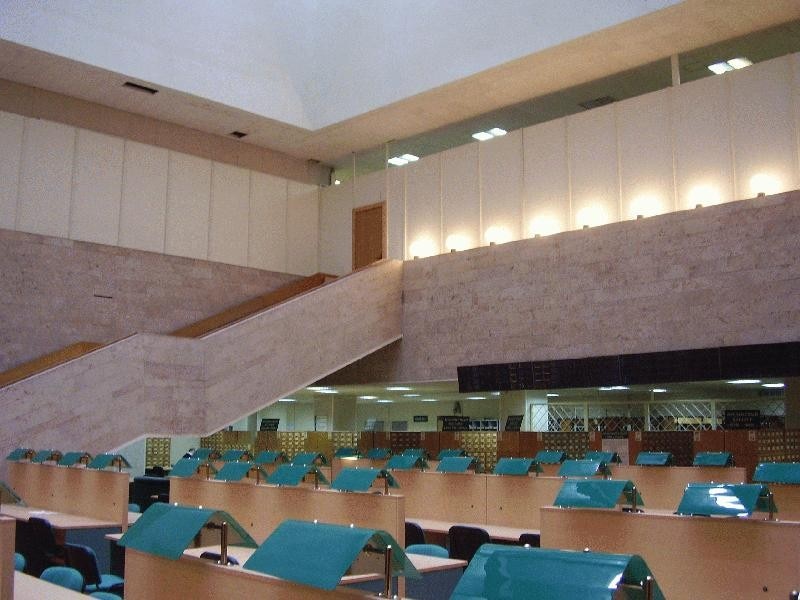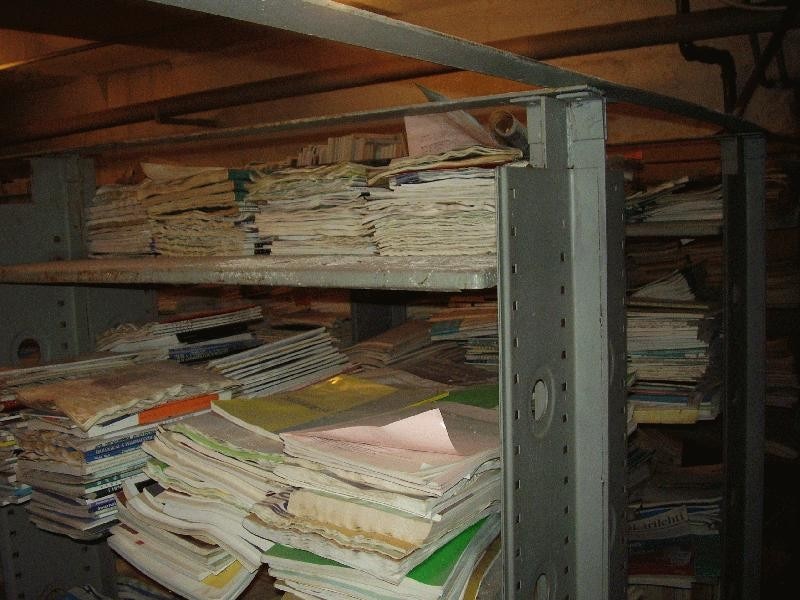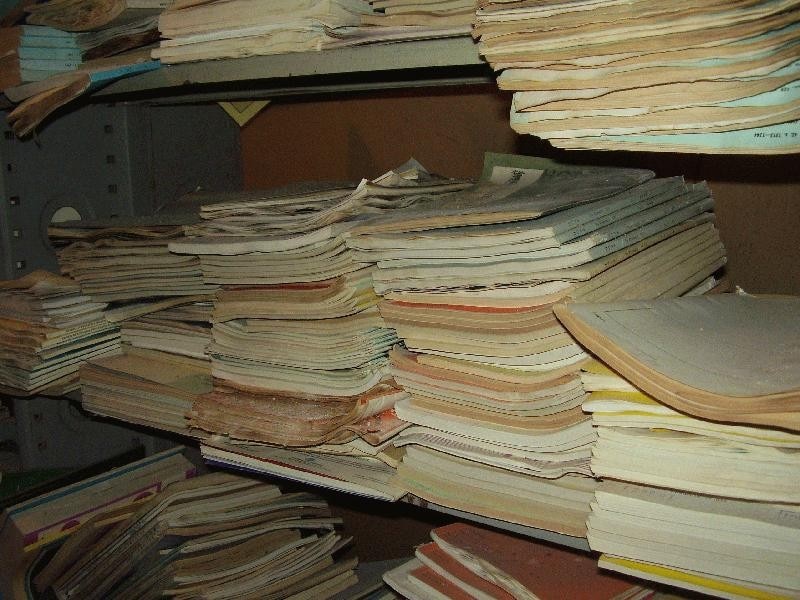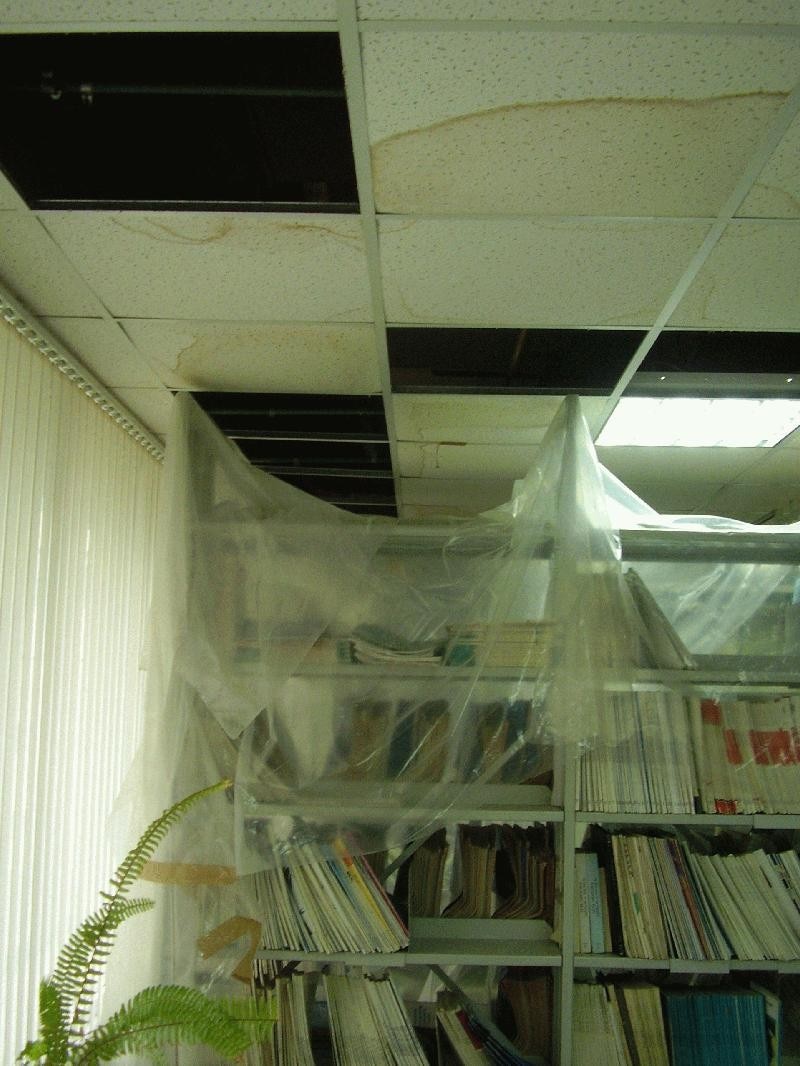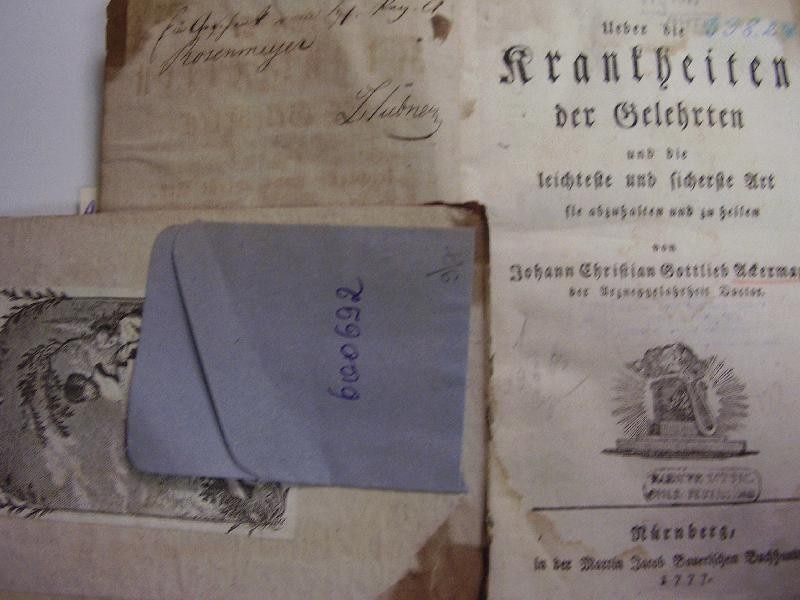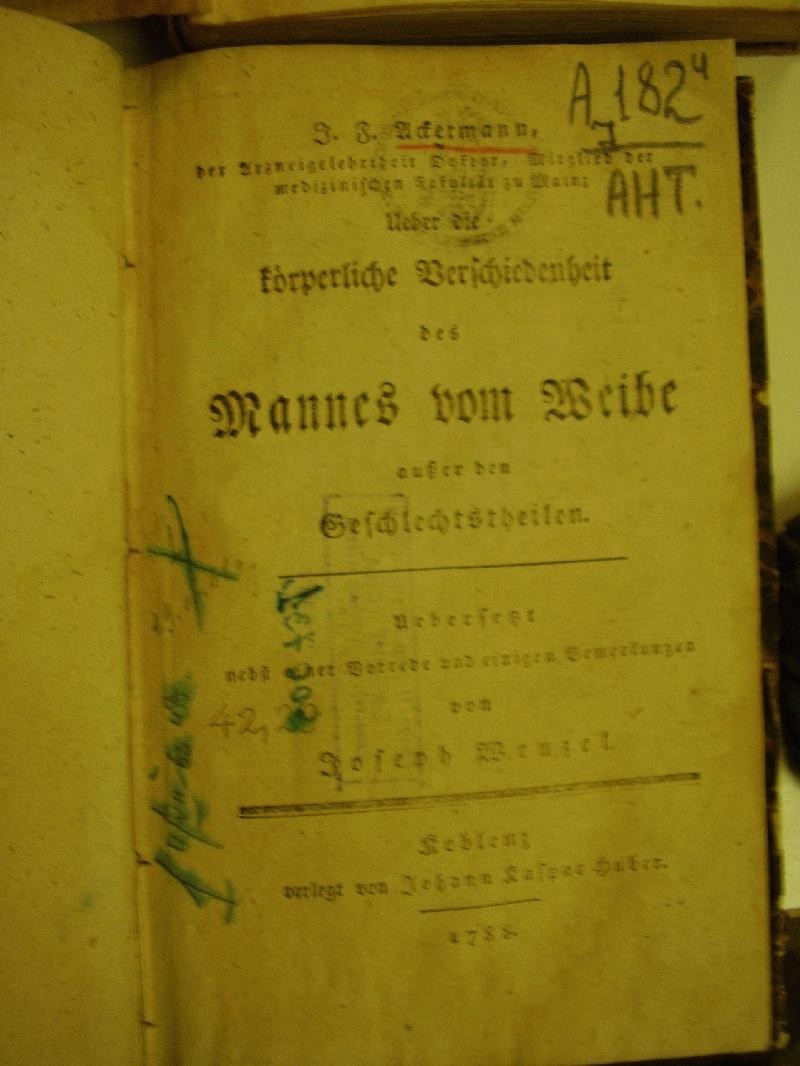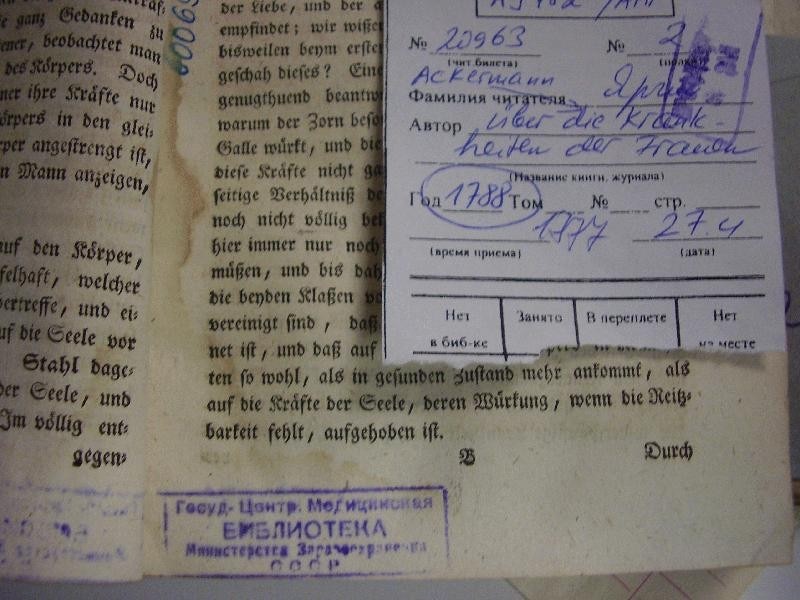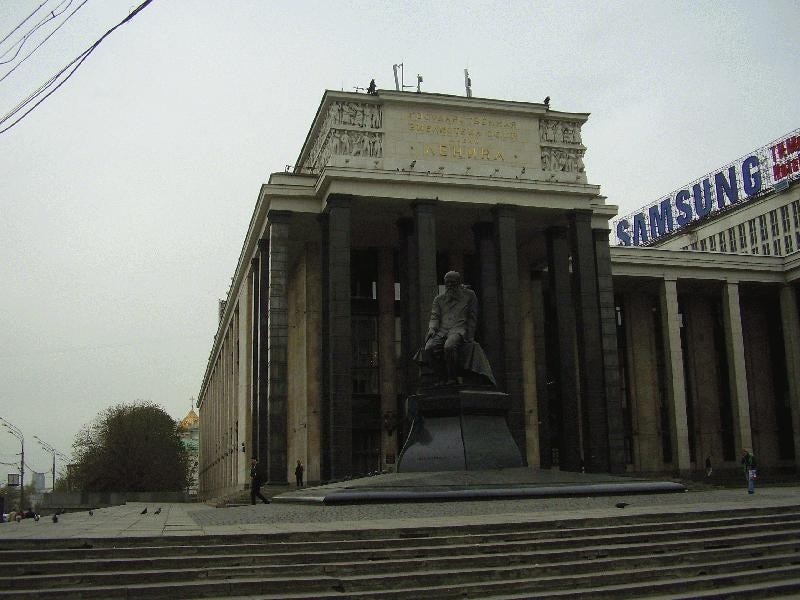Fig. 1. Russian State Library was designed by Vladimir Shchuko and Vladimir Gelfreikh in 1927-1929, and was completed in 1941. Before that, the Library was situated in the Pashkov House (see the update of 03.01.2010). The facade is neoclassical, but the aura of Constructivism, still alive in Moscow at that time, is recognizable. The huge columns of the Library symbolize stability of the Soviet ideology and the fundamental role of scientific knowledge in it. The Library and the storehouse behind it were constructed near the entrance to the Kremlin, having replaced several older buildings. Since the 1990s, large-scale repairs have been carried out within the Library, during which time much of the collection was not available. Most of the foreign professional journals issued before the year 1985 were transferred to the division of the Library in the suburb town of Khimki. In addition, all domestic newspapers (except for the previous year) and many foreign books on science and architecture are in Khimki. It can be heard as justification that Russian State Library, one of the largest in the world, is unfavorably located: in the crowded city center, near the entrance to the Kremlin; and the readers should be possibly redirected elsewhere. It is a reason indeed, but the division of the State library should have been transferred probably not so far away.
Fig. 2. Interior of a reading hall of the Russian State Library.
Fig. 3. Central Medical Library in Moscow was completed in 1978, designed by Yakov Belopolsky, Lev Misozhnikov and Efim Vulykh as a part of an ensemble including also the Institute of Scientific Information, the Central Economics and Mathematics Institute and a swimming pool, which is abandoned today. It is located in a predominantly residential area near Profsoyuznaya Metro station, while the high-rise blocks continue to appear in the surroundings.
Fig. 4. A reading hall. The space on the top floor belonged to the Library until the 1990s, but now it is used by the I.M. Sechenov Medical Academy for teaching, which causes noise in the reading hall and shortage of space for book storage. Also other rooms were taken away from the Library. As a result, most foreign journals from the 1990s and other literature were transferred to the basement.
Fig. 5-6. Storage of foreign journals in the basement, which was repeatedly flooded. From the basement, the journals are not given out to the readers. Some journals were damaged by water and are unsuitable for further use.
Fig. 7. Department of Current Periodicals. Some of the journals were damaged by water during a recent leakage.
Fig. 8-10. Editions from the 18th century with the traces of water damage. A paper pocket is sticked directly onto an ancient engraving (fig. 8). There is a tendency: old books are rarely asked for and, considering the shortage of space, they are transferred to basements or other remote rooms, where they are at risk of water damage.
